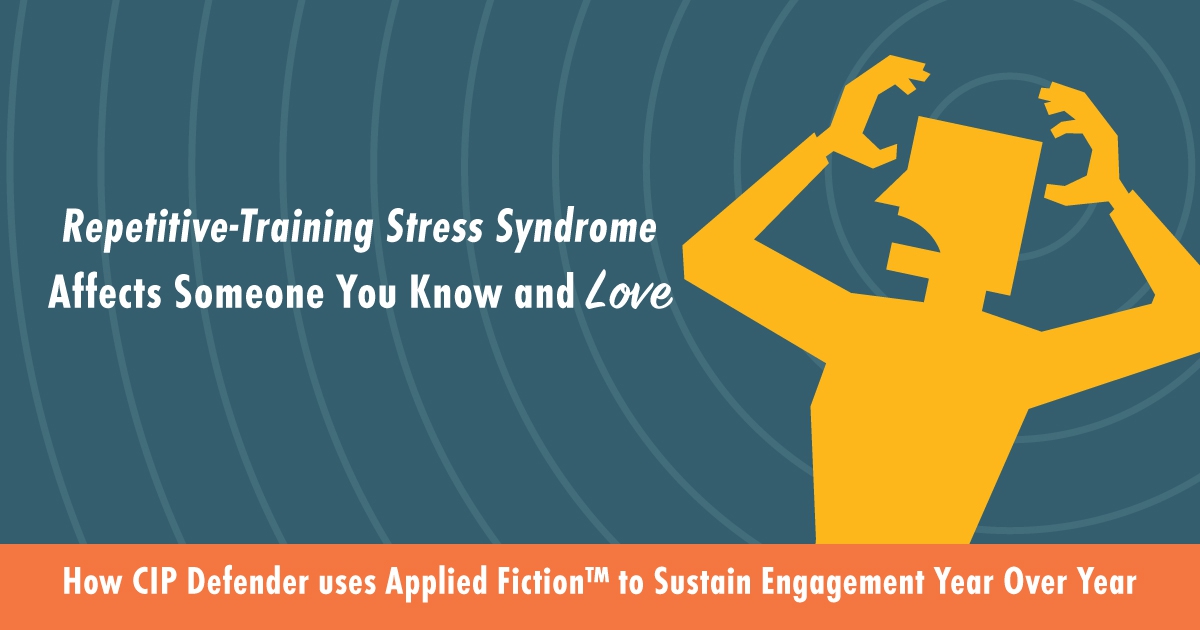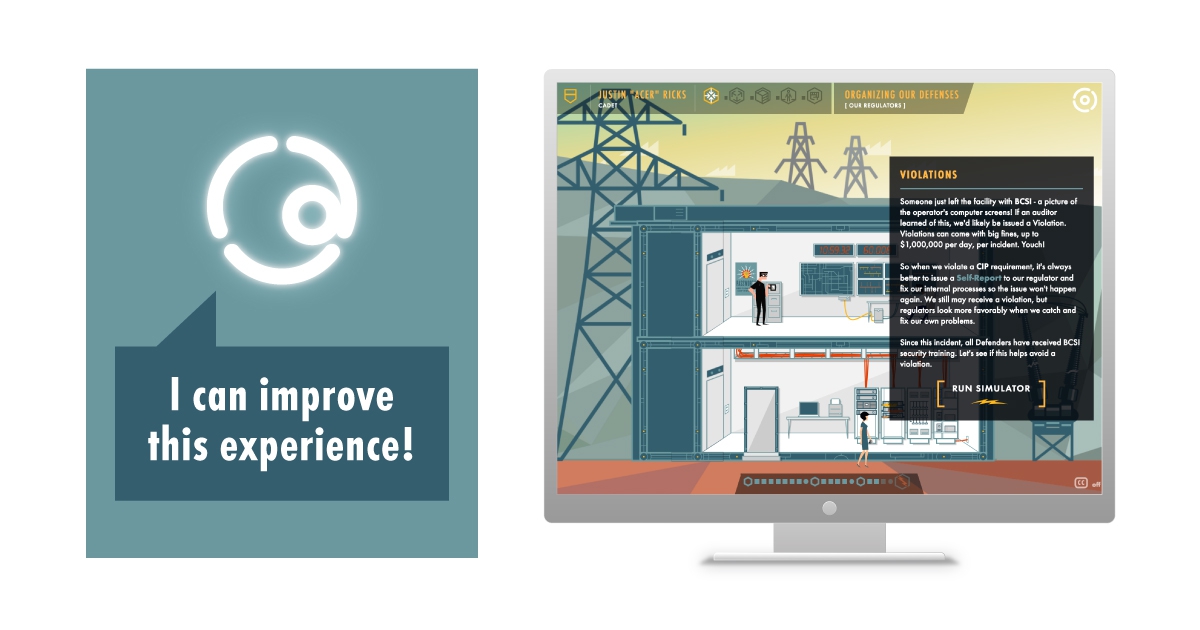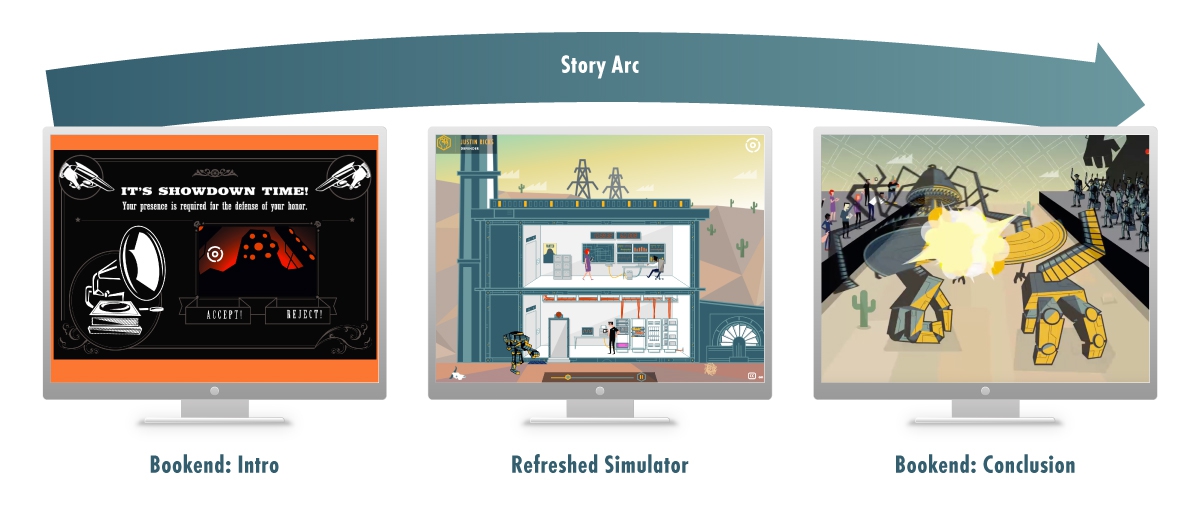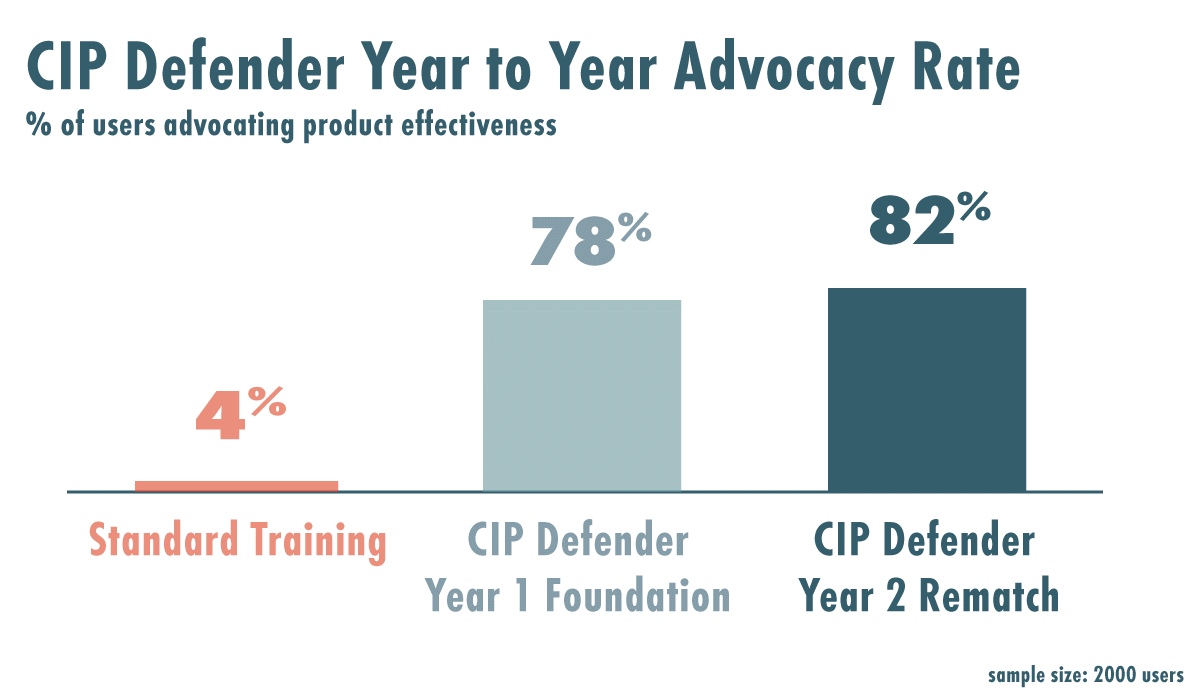
Duke “Buzz” Sullivan is a System Operator no more.
You see, Duke had a unique experience last year. He learned cyber-defense skills from the world’s most sophisticated artificial intelligence, practiced those skills in a virtual facility simulator, and then stood against Sektimus, the alien robot mastermind bent on destroying Earth’s energy infrastructure. Duke now sees himself as more than an operator – calling himself a “Defender of his infrastructure”.
Stories like Duke’s highlight the power of narrative in the CIP Defender cyber-security awareness product, but when compliance regulations require training over the same content each year, won’t Duke be bored with the same content next year? Learning and Performance expert Nick Shackelton-Jones speaks to the repetition problem in his article Think Twice Before Using Repetition. Nick’s research shows that repeating the same content over and over causes no additional retention or learning. If repetition is effective at anything, it’s wasting employee time.
This problem isn’t unique to CIP Defender, as we all know from taking the same corporate e-learning course multiple times, but that is hardly an excuse to continue the corporate waste and mental numbing of people everywhere. Our solution to the repetition problem aligns with Nick’s recommendation and won’t be a surprise to readers of this blog – add “stories, scenarios, and simulation.” In the remainder of this article, I’ll give a peek behind the curtain on the three ways we re-engaged second-year learners using our Applied Fiction methodology – Freshen the Truth, Continue the Story, and Raise the Stakes – and conclude with data and results from our trailblazer customers.
Freshen the Truth
Applied Fiction always starts with the truth, so we first needed to understand how effectively the first-year training simulator connected Critical Infrastructure Protection (CIP) compliance concepts and duties with learners. To gain this understanding, we turned to data – specifically the CIP Defender data warehouse that contains the anonymous in-game decisions, reviews, and comments of thousands of learners. The data informed of what to keep and what to cut as we developed our year-two learning experience.
An analysis of the aggregate data revealed several actionable points. Learners expressed positive comments on the facility simulator as a tool for helping them understand cyber-security concepts. Critical comments primarily centered on the length of textual content, with many useful suggestions provided on how to streamline the content. Test scores indicated that learners were developing a good competency in the concepts. We were surprised by the amount of positive feedback on the digital characters who populated the facility.

Our path was clearly evolution, not revolution. In practical terms, the simulator would remain the core element of the learning experience. Since the audience was now familiar with the content, we could move all quizzing to the end instead of being sprinkled throughout.
Continue the Story
We still had a fundamental problem to solve. In year-one, the learner defeats the evil robot mastermind Sektimus with the help of a trusty AI named CTANLEE who uses the simulator to equip the learner with cyber-security skills. Learners enter training as a Recruit and leave a Defender. This creates a challenge with the story in year-two. We knew the simulator was effective and needed to keep it, but why would CTANLEE send our Defenders through the same simulator again in year-two? Wouldn’t a real character do something different the second time?
We didn't buy it, so neither would our audience.

At first glance, this seems like a problem completely created by adding story to the training. After all, no one complains about continuity when they're expected to look through slides of bullet points in a PowerPoint deck for the second or third or tenth time. Don’t be fooled by the training tradition because the monster is exactly: If the content is fundamentally the same what reason does your audience have to care?
Some might argue this isn't our problem to solve. After all, it's on the user to pay attention and it's their fault if they don't. Unfortunately, the mind is a leaky thing if not properly stimulated. Further, if the trainer did not take time to refresh the content, how truly important is it? When something isn't memorable, it quickly gets shoved out of the mind for something that is.
Our solution is to bookend the simulator with a story arc that continues where year-one left us - a triumphant Defender and a humbled Sektimus. In the year-two introduction, Sektimus wants revenge and issues an honor duel against the Defender. Not just any duel, mind you – he issues a Trial-By-Duty where the Defender’s knowledge will be tested. To prepare for the trial, CTANLEE will send them through the simulator again to refresh their knowledge.

Not surprisingly, story became the solution for all major contextual problems of repetitive content. We have trappings of an interesting narrative and have a reason outside of “compliance says so” as to why learners’ must go through the same content again. But we could go further. It was time to take a risk and raise the stakes.
Raise the Stakes
To make the training match the dueling theme, we added new cast members, new music, new dialogue lines, and re-skinned it with techno-western feel.
But we wanted more.
Think about it for a moment - by the end of this simulator experience, these Defenders will have been sustaining compliance for two years of their life. No longer recruits, they deserve a greater challenge than embarrassing Sektimus.
So we put Earth at stake. If the Defender fails at Trial-By-Duty, something terrible will happen to Earth’s Bulk Electric Grid.
Since the simulator was a safe place, it could not be the location of our showdown over Earth. The duel would happen at the wild edge of the galaxy where anything goes. The fate of Earth would be determined by our Defenders at Duty Dome. To facilitate the dueling sequence, we overhauled the quizzing system to be an integral part of the story itself, allowing Sektimus to launch attacks and the Defender’s counter-attacking by answering questions. The conclusion is ........... (you didn’t think we’d tell you the ending, did you?)
No Snake Oil Here
Freshening the Truth, Continuing the Story, and Raising the Stakes all worked together to create a refreshingly engaging sequel to Year One that we are proud to call CIP Defender: Rematch. But does it work?
The numbers are in from our trailblazer customers. Across thousands of learners, year-one advocacy is 78%. Year-two advocacy actually increased to 82%! Clearly, Rematch is a strong antidote to compliance-related Repetitive Training Stress Syndrome. Apply to the brain annually.

This article just scratches the surface of Rematch – we’ll unpack more over the next few blog posts so you can get a better taste of it. Yehaw!
-Mike and Chris

